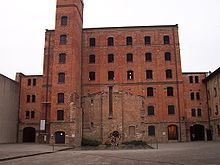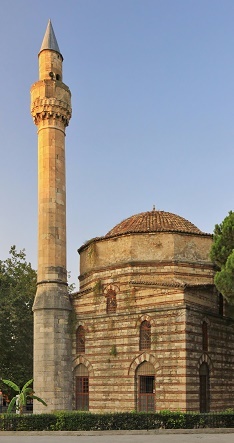  
|
|
Trieste
by Daša Drndić http://www.islamicpluralism.org/2506/trieste
With Trieste, a novel in the "neo-Borgesian" style—merging history, personal anecdotes, and fictional meditations—Drndić has written a great work, adding significantly to our knowledge of the Holocaust in German-occupied Europe. Centering her narrative in Trieste, the port at the north of the Adriatic Sea, she has produced a harrowing volume. Trieste is not for the faint-hearted, but it is a necessary and virtuous chronicle. Trieste was a Habsburg seaport for centuries, inhabited by three main communities: the Italians, the Slovenes, and the Jews. The first two despised one another, while the Jews, largely middle-class and assimilated to the cultures of their neighbors, tried to maintain good relations with both the Italians and Slovenes. The Austro-Hungarian political system encompassed an overabundance of competing nations but managed to balance their competing claims. "The Monarchy [was] mighty," Drndić writes; it extended hundreds of miles from the German-speaking west to the Carpathian east, from the Czech north to the Dalmatian south. Before World War I, Trieste was ruled by Germans and Hungarians; afterward, it was annexed by Italy. In 1919, as Drndić notes, its southerly rival—Fiume in Italian and Rijeka in Slavic—was the scene of a comic-opera coup by a flamboyant writer-adventurer, Gabriele D'Annunzio. Trieste, remaining under the sovereignty of Italy, was swept by the new fascist mass movement in 1920. Drndić likens the arrival of fascism to "rats pouring out of the Trieste sewers." Fascist personnel persecuted Slovenes, invaded the surrounding villages, and beat and stripped those of all ethnicities who were identified as peasants and leftist activists. By 1922, Benito Mussolini and his thugs had assumed supreme power. Nevertheless, multiple cultural identities persisted in the region. Drndić's narrative ranges to the town of Gorizia (in Italian, Gorica in Slavic). Her protagonist, Haya Tedeschi, of Italian Jewish origin, is born in 1923 and spends most of the novel attempting, in the first decade of the 21st century, to assemble the truth about her life. Her dignity, and that of her fellow Jews, had been fractured unalterably by the descent upon the population, during World War II, of Germany's National Socialism, feral cousin of Italian Fascism and monstrous reanimation of the Habsburg bureaucratic mentality. In this regard, by providing a memorial to Jews and others murdered and exploited by the Nazis in Trieste yet ignored by most later commentators, Drndić has done a considerable service to the world. And as she makes clear, the worst horror of Nazi domination was its unpredictability, arbitrariness, and tendency to masquerade as a normal, if harsh, form of military occupation. Because of the cruelties imposed on the Jews of Gorizia and Trieste, Haya Tedeschi loses all trace of her family's background. Documents and photographs are missing, people she knew have been killed in bombings, deported to death camps, or committed suicide, and some have accepted baptism as a means (although uncertain) of saving their lives.
Survival assumes many forms of behavior in Nazi-occupied Trieste. Haya flees with her family down the Adriatic to the city of Vlora in Albania, which is an Italian possession but free of German anti-Jewish propaganda. At first the family are not classified as refugees in Albania, but then they are—and they return, through Venice, to Trieste. Trieste includes many things that may surprise the most assiduous readers of the Holocaust canon. Heinrich Himmler, leader of the SS and despairing over the sexual deprivations of Aryan troops, commissioned the production (according to Drndić) of an inflatable "disinfected rubber doll in natural size." Intended to prevent German soldiers from relationships, however brutal and brief, with local women who were typically Slavic or Jewish, the doll goes out of production, leaving only a single prototype at the end of the war. This detail reminds one of Germany's advanced technology in rocketry and jet aircraft and the strange capacity of Hitlerism to anticipate things we see around us today. Still, German officers formed alliances with Jewish and Slavic women, and Haya becomes the lover of a handsome SS officer, Kurt Franz—a real person, depicted in photographs included here. Franz was a guard at Treblinka whose task was to run a fake railroad station intended to convince deportees that the site was a normal village in German hands. In 1945, Franz was captured by American soldiers, but he escaped. He was arrested in Düsseldorf in 1959, charged with individual and mass killings, and sentenced to life imprisonment. He was accused, among other things, of sending a sister of Sigmund Freud to her death after persuading her that she would be returned to Vienna through the phony train station. Railroads are the focus of another disturbing revelation in Trieste. When the Germans sent trainloads of captives to the camps, and the Brenner Pass through annexed Austria was closed by a heavy snowfall, the Nazis secured the cooperation of neutral Switzerland in dispatching freight trains filled with Jews and Gypsies through the Gotthard Pass. Swiss citizens, mobilized by the Red Cross, distributed soup to the condemned when the trains stopped in Zurich. This gruesome pantomime was repeated up to a dozen times, and the Swiss Red Cross, Drndić writes, "behaved . . . as if it were the savior, as if [it] saved all those people." But of course, they were not saved, and Drndić follows her seven-page account of this episode with a bare, 43-page list of 9,000 Jews killed in Italy or its occupied territories during the Holocaust. Like other writers on the atrocities of Nazism—such as the 2002 Nobel laureate Imre Kertész, who survived Auschwitz and whom Drndić evokes—the Croatian novelist is compelled to reveal everything she can. Trieste is especially valuable for its description of an obscure death camp at San Sabba, a suburb of Trieste, where 150 people were killed daily during 1943-45, totaling as many as 5,000 Italians, Slovenes, Croats, Jews, Gypsies, anti-fascist partisans, and others. Drndić's recounting of the crimes at San Sabba is veridical, drawn from a 1976 trial of SS guards conducted in Trieste. As Trieste continues, its point of view shifts from that of Haya Tedeschi to that of her son by Kurt Franz, a boy handed off to a German mother and given the name Hans Traube. But to disclose more here would be unfair, because no summary of Trieste can do justice to the extremity and extent of the evil it describes. This is an angry, eloquent, disquieting novel that should become an indispensable model for chroniclers to come. Related Topics: Albanian Muslims, Balkan Muslims, Muslim-Jewish Relations, Sephardic Judaism receive the latest by email: subscribe to the free center for islamic pluralism mailing list |
Related Items Latest Articles |
|||||
|
© 2025 Center for Islamic Pluralism. home | articles | announcements | spoken | wahhabiwatch | about us | cip in the media | reports external articles | bookstore | mailing list | contact us | @twitter | iraqi daily al-sabah al-jadid |
||||||

